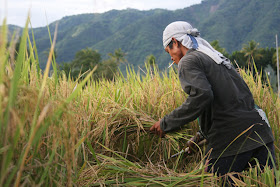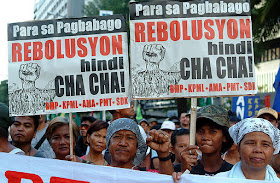As early as this late July, disquiet has been looming over Canada Immigration’s plan to slam the door to immigrants planning to make Canada their new home. The federal government, capitalizing on its newly-earned majority in Parliament, had just published the names and mug shots of suspected war criminals living in Canada.
 |
| Immigration Minister Jason Kenney appeared before a House of Commons committee on Oct. 20, 2011 to discuss immigration backlogs. Photo courtesy of Adrian Wyld/Canadian Press. Click image to view "Immigration Minister Jason Kenney talks to stakeholders and the public about 2011 immigration policy," http://www.youtube.com/watch?v=aKuRRYr88a4 |
Jason Kenney, Canada’s minister for citizenship and immigration and popularly dubbed by the media as the “Immigration Hunter,” asked Canadians to help the government round up and deport suspected war criminals and illegal immigrants. Kenney also announced that the government would strip 1,800 people of their Canadian citizenship, which he said was obtained fraudulently.
On October 20, Jason Kenney rose before the Parliament’s Standing Committee on Citizenship and Immigration and delivered the ominous message that immigration applications need to be reduced in order to fix the current backlog.
After smugly boasting that the backlog issue reflects Canada being the number one choice destination of immigrants in the world—a land of opportunity, prosperity and democracy, Kenney then turns the problem of backlogs around as a simple mathematical problem. “When total applications exceed total admissions, you get a backlog,” he says.
To address the backlog problem, Kenney suggests that immigration levels be reduced. He stressed that annual applications must be cut down so that processing will not be slowed down as new applications are added to the pile of applications received in the previous years.
Kenney’s understanding of the immigration backlog problem appears irrational, if not fallacious. First, if Canada is indeed the number one choice for immigration in the world, then whatever number and mix Canada Immigration would establish every year—and no matter how high—would always fall short of the total population willing to come to Canada. Thus, there will always be a backlog. The backlog issue is never a function of the number of applications accepted or the government is willing to entertain, but the number of applications actually processed and approved.
Second, the best way to confront the backlog problem is to use a real timeline, which means starting from the time an actual application is accepted and processed in a visa office, which is a long way before an application can be successful. This means excluding whatever targets are established every year, because you cannot effectively measure operational efficiency against the whole population of would-be applicants, who on paper may all be accepted or denied.
So much time is spent from the day an application is actually received and reviewed. Information has to be verified and cross-referenced with Canadian labour requirements and needs or immigration policy targets and priorities before applicants appear for their personal interviews. One wonders why it takes so much time when we have at our disposal all the advances in technology and in medical and criminal surveillance.
And lastly, backlogs could be considered an inherent and perhaps, a necessary control valve to assure that we get the best we are looking for. People who apply to come to Canada as immigrants are its future citizens and Canada Immigration has the obligation to sort and screen from a mountain of applications only those who seem to be the best fit. In other words, backlogs are not bad per se.
Backlogs become a serious problem only when they involve applications which are supposed to be processed with haste and urgency due to shortage of skilled labour or when a matter of legal right has already been established. Much-needed temporary foreign workers and highly skilled immigrants fall under this category, and when their applications are bogged down in bureaucracy and red tape, backlogs become upsetting and distressful.
Sponsorship of family members such as spouses, children and parents is also a critical part of this category of immigrants. These are family members who have earned the right to come to Canada to live with their primary sponsors, especially those who have become citizens and contributed to the Canadian economy.
Minister Jason Kenney is proposing to cap the number of applications for family reunifications. Reducing the number of parents who could qualify under family reunification is impossible to accomplish without tinkering with the original make-up of Canadians to be allowed as permanent residents. Will Canada Immigration disqualify applicants with older parents, such those over 50 and above, or discriminate against married applicants with children and living grandparents? What happens now to the objective of the Immigration and Refugee Protection Act (IRPA) to see to it that families are reunited in Canada?
There is already a low income cut-off requirement for sponsorship of family members, which is periodically reviewed and adjusted to economic reality. One cannot sponsor his or her family members if this income requirement is not met. In addition, sponsors are required to make an undertaking to provide financial support to their families, particularly parents, for a period of 10 years so they cannot opt to get social assistance during this period.
A proposal to give priority to families who can pay $75,000 up front for medicare expenses is both discriminatory and contrary to the objective of family reunification under the IRPA. And why would the problem of backlogs in processing be aligned with the economic ability of applicants to put money up front, when in fact it has nothing to do with the right to family reunification?
Refugees and those who are in need of protection routinely wait years for Canadian immigration officials to process their applications to Canada. The slow pace of having their applications processed adds to the refugees’ hardship and struggle to survive in desperate and dangerous situations, especially for those waiting to be reunited with their families trapped in refugee camps or countries beset with civil strife and wanton violation of human rights.
Will Jason Kenney throw them out of the plane too, as he is apt to describe Canada’s immigration system, and say to hell with Canada’s international obligations and commitment to refugees?
“Backlogs are not a function of a scarcity of operational resources,” according to Kenney. Despite Canada Immigration’s much-ballyhooed new worldwide electronic platform, the promise of modernization and efficiency of its Global Case Management System remains to be seen.
If there is a real and pressing backlog that needs to be addressed by Canada Immigration, it is in these categories of applicants—skilled workers, temporary or permanent, family members, and refugees—that the resources of government should be invested in. Not just in operational efficiency, but in clarity, consistency and fairness of government policy.
Contrary to the Conservative Party’s boast during the last federal election that they are the party for immigrants, they are nowhere near it as immigration levels in Canada continue to decline. There is clear evidence that the Conservative government is embarking on a hidden agenda to restrict the country’s immigration levels. The world’s economic downturn is being used as an easy and lame excuse, as governments in Europe, especially England, the United States and Australia are all focusing on reducing their intake of immigrants as part of their austerity agenda.
The extreme measures undertaken by the Conservative government are helping reduce the number of immigrants coming to Canada. Latest statistics from Canada Immigration show a decline across the board. Visas for skilled workers are down by 28 per cent, family-sponsored relatives are down by 14 per cent, and refugees, down by 25 per cent.
Myer Siemiatycki, professor of politics and public administration at Ryerson University, says the evidence is showing a very sharp decline. “Has the government decided on the outset that they want fewer admissions? Is the tap being closed tighter?” he asks.
Canada Immigration Minister Jason Kenney has already admitted that he plans to cut family class immigrations. More draconian measures from the Conservative government can only be expected soon, and these would be devastating for immigrants.





